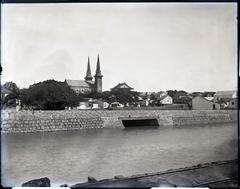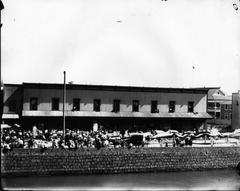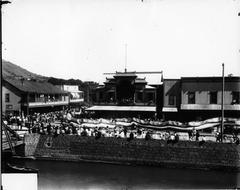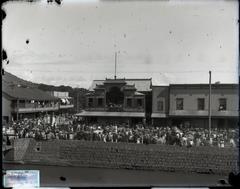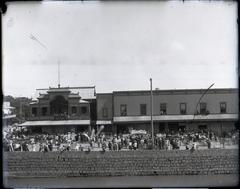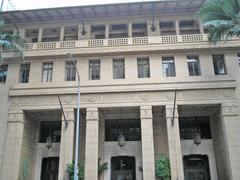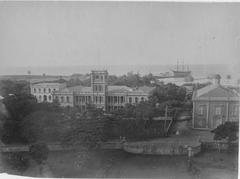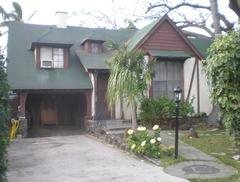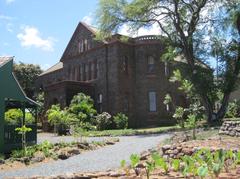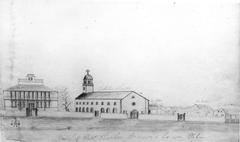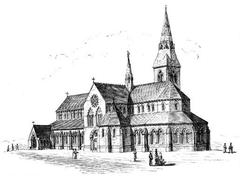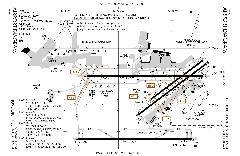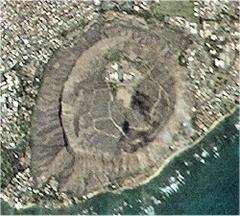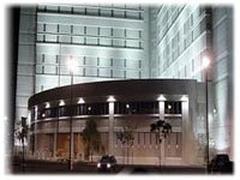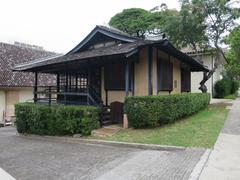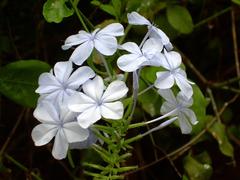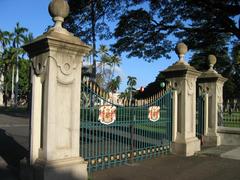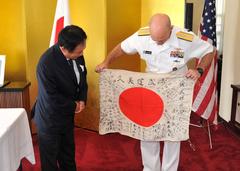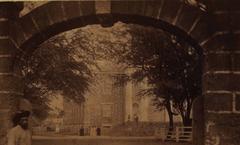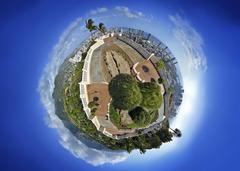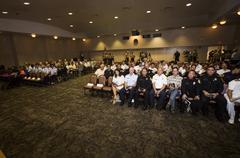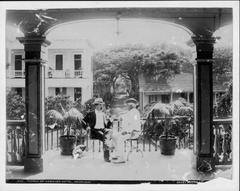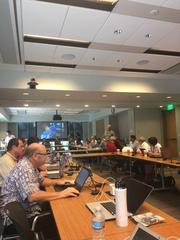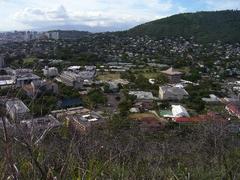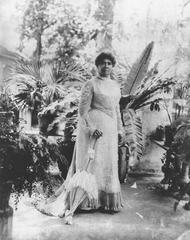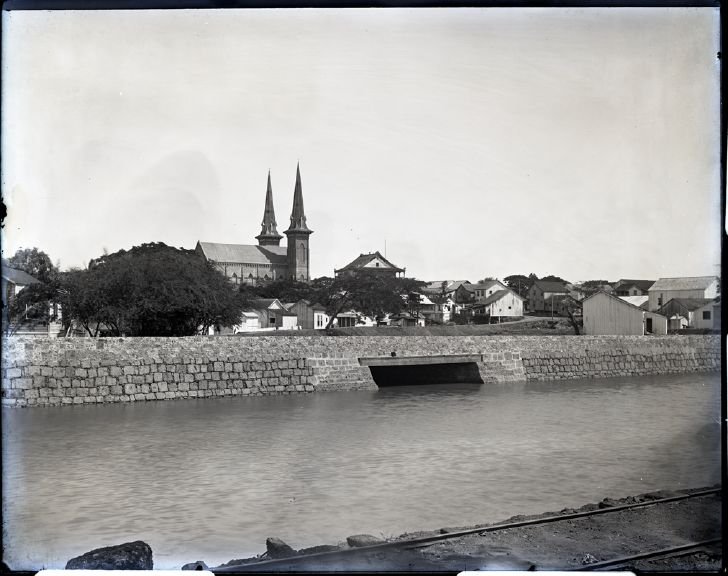
Chinatown Honolulu Visiting Hours, Tickets, and Historical Sites Guide
Date: 14/06/2025
Introduction: The Heart of Multicultural Honolulu
Honolulu’s Chinatown is a living archive of Hawai‘i’s multicultural evolution—one of the oldest Chinatowns in the United States and a vibrant neighborhood that continues to reflect the island’s diverse heritage. Originally established in the mid-19th century through immigrant entrepreneurship, not segregation, Chinatown evolved as a hub for commerce, culture, and community. Its story is one of resilience: shaped by waves of immigration, devastating fires, political change, and creative revitalization. Today, visitors encounter a dynamic district teeming with historic landmarks, bustling marketplaces, innovative arts venues, and celebrated festivals that honor Chinese, Native Hawaiian, Filipino, Vietnamese, Japanese, and other local cultures.
Chinatown’s open-access setting—with no general admission fees—invites exploration year-round. Guided tours, special events, and neighborhood festivals offer deeper insights, while the neighborhood’s storied streets, authentic eateries, and unique boutiques provide a sensory journey through urban Hawai‘i. This guide presents a comprehensive overview of Chinatown’s history, visitor essentials, and must-see highlights to help you make the most of your visit. For more details on hours, ticketing, accessibility, and cultural programming, reference the Hawaii Heritage Center, Hawaii Theatre, and travel features from Condé Nast Traveler.
Table of Contents
- Introduction
- History and Evolution of Honolulu Chinatown
- Visitor Information: Hours, Tickets, and Accessibility
- Key Historical Landmarks and Attractions
- Markets, Culinary Highlights, and Shops
- Arts, Festivals, and Community Events
- FAQ: Chinatown Honolulu
- Safety and Travel Tips
- Conclusion and Recommendations
- References
History and Evolution of Honolulu Chinatown
19th Century Foundations
Honolulu’s Chinatown began in the 1840s as Chinese immigrants, primarily laborers brought for sugar plantations, established businesses and homes near Honolulu Harbor (Australian Outlook). Over time, the district became a melting pot—home not only to Chinese but to Native Hawaiians, Japanese, Filipinos, Portuguese, and others (HiChinatown.com). Chinese merchants, after completing plantation contracts, invested in shops, restaurants, and services, often integrating living quarters above or behind their businesses.
Chinatown quickly emerged as Honolulu’s commercial engine, with Chinese involvement pivotal in the sandalwood trade and early cash crop cultivation. Intermarriage between Chinese men and Native Hawaiian women further wove the district into the island’s multicultural tapestry (Australian Outlook).
Fires and Urban Transformation
Two catastrophic fires—one in 1886 and a second, intentionally set in 1900 to halt a plague outbreak—destroyed much of Chinatown (HiChinatown.com). The area was rebuilt with brick and stone, creating the dense, multi-story structures that define the district today. This era of reconstruction mixed Asian and Western architectural styles and set the stage for Chinatown’s 20th-century evolution (Historic Hawaii Foundation).
Political and Social Dynamics
Chinatown’s residents navigated shifting power structures in Hawai‘i, especially during the transition from monarchy to U.S. territory. Far from a monolithic enclave, Chinatown has always been shaped by diverse ethnic groups and their interactions, with the Chinese community actively participating in local politics and maintaining transnational ties (Australian Outlook).
20th Century: Red Light District, Decline, and Revitalization
During the mid-1900s, Chinatown’s reputation as a red-light district grew, marked by nightlife, gambling, and crime (The City Lane). Yet, the neighborhood’s authenticity and its role as a center for immigrant entrepreneurship endured. In recent decades, preservation initiatives, arts investments, and culinary innovation have reinvigorated the area (This Hawaii Life).
Preservation and Contemporary Significance
Recognized as a National Historic District, Chinatown’s 36-acre area preserves much of its early 20th-century architecture (Historic Hawaii Foundation). Markets, family-run businesses, and festivals continue to celebrate the district’s multicultural legacy (This Hawaii Life; The City Lane).
Visitor Information: Hours, Tickets, and Accessibility
Hours and Entry
- Neighborhood Access: Chinatown is open to the public at all times. Most businesses operate between 8:00 AM and 6:00 PM, with restaurants and nightlife venues extending later.
- Markets: Open early mornings through late afternoon (approx. 6:00 PM).
- Hawaii Theatre: Box office hours are typically Tuesday–Saturday, 12 PM–5 PM; event times vary (Hawaii Theatre Official Site).
Tickets
- General Admission: No entrance fee to Chinatown itself.
- Attractions & Tours: Hawaii Theatre events, Hawaii Heritage Center exhibits, and guided walking tours may require tickets or suggested donations. Check official websites or book in advance during busy periods.
Accessibility
- Pedestrian-Friendly: Sidewalks and crosswalks are common, though some streets have uneven pavements.
- Mobility: Many venues are wheelchair-accessible, but confirm with individual sites for accommodations.
- Transit: Served by TheBus and within walking distance of major downtown attractions.
Getting There & Nearby Sites
- Location: Downtown Honolulu, bordered by King Street, Beretania Street, Maunakea Street, and Nuuanu Avenue.
- Parking: Limited but available at the Chinatown Parking Lot.
- Nearby Attractions: Iolani Palace, Hawaii State Capitol, and Hawaii State Art Museum are all within easy reach.
Key Historical Landmarks and Attractions
- Hawaii Theatre: A restored 1922 Beaux-Arts venue hosting performances and events (This Hawaii Life).
- Oahu Market & Maunakea Marketplace: Central to daily life, these markets offer local produce, Asian groceries, and street food (This Hawaii Life).
- Hawaii Heritage Center: Museum and tour hub highlighting Chinatown’s multicultural history (This Hawaii Life).
- Chinatown Cultural Plaza: A hub for community events and Lunar New Year celebrations (Rove.me).
- Temples and Shrines: Including the Guanyin statue at Maunakea Marketplace, reflecting the area’s spiritual roots (Condé Nast Traveler).
Markets, Culinary Highlights, and Shops
Markets & Streets
- Maunakea Street & Hotel Street: Epicenter of markets, lei shops, and herbalists (NYMag).
- Foodscape: Multilingual signage and menus reflect the diversity of Chinatown’s residents (Multilingual Foodscape Blog).
Food & Restaurants
- Legend Seafood Restaurant: Classic dim sum and Cantonese fare (Honolulu Magazine).
- The Pig and The Lady: Acclaimed for modern Vietnamese cuisine (The Hawaii Vacation Guide).
- Lucky Belly: Ramen and Asian fusion.
- Topped: Korean bibimbap (NYMag).
- Madre Chocolate: Bean-to-bar chocolate with tastings and classes.
Shops & Boutiques
- Art at Marks Garage: Nonprofit arts center with exhibits and performances.
- Local Boutiques: Offer jade charms, festival goods, contemporary fashion, and Hawaiian literature (Condé Nast Traveler).
Arts, Festivals, and Community Events
Festivals
- Lunar New Year Parade: Lion and dragon dances, martial arts, and street food. Parade begins at the Hawaii State Capitol and ends at A‘ala Park (Honolulu Magazine).
- First Friday: Monthly art walk with open galleries, live music, and extended hours (First Friday Hawaii).
- MAMo Festival: Celebrating Native Hawaiian arts and design (NYMag).
- Annual Block Parties: Including St. Patrick’s Day festivities.
Guided Tours
- Hawaii Heritage Center Tours: Cover immigrant history, architecture, and culinary highlights.
- Honolulu Exposed Tours: Explore the neighborhood’s colorful past.
FAQ: Chinatown Honolulu
Q: What are the visiting hours for Chinatown?
A: The neighborhood is open 24/7; most markets and shops operate 8 AM–6 PM.
Q: Are there entrance fees?
A: No, general access is free. Some attractions and tours require tickets.
Q: When is the best time to visit?
A: Weekdays, early weekends, or during festivals like Lunar New Year and First Friday.
Q: Are guided tours available?
A: Yes, via the Hawaii Heritage Center and other providers. Book in advance.
Q: Is Chinatown accessible for people with disabilities?
A: Most of the district is accessible, but some older buildings may have limitations.
Q: Is Chinatown safe?
A: Exercise standard urban precautions. Visit during busy hours and stick to main streets, especially after dark (Hawaii Star).
Safety and Travel Tips
- Daytime visits are safest and most lively.
- Stick to main streets after dark; avoid quiet side alleys.
- Keep valuables close and remain aware of surroundings.
- Use public transit or rideshares if parking is limited or if staying late.
- Consult local resources and the Honolulu Police Department for current updates.
Conclusion and Recommendations
Honolulu’s Chinatown is a vibrant blend of history, culture, and contemporary innovation. From its preserved architecture to its bustling markets and dynamic arts scene, the district offers a multifaceted experience for every traveler. Enjoy world-class cuisine, local festivals, and immersive tours that reveal the layered stories of this unique neighborhood. For the best experience, plan your visit around major events, check official hours, and consider a guided tour to deepen your understanding.
For more travel tips, event updates, and personalized itineraries, download the Audiala app and follow our social channels. Dive into Chinatown Honolulu and discover the creative, culinary, and communal spirit at the heart of urban Hawai‘i.
References
- Hawaii Heritage Center
- Hawaii Theatre
- Condé Nast Traveler
- Australian Outlook
- Hawaii Guide
- Historic Hawaii Foundation
- The City Lane
- NYMag
- This Hawaii Life
- Honolulu Magazine
- First Friday Hawaii
- Multilingual Foodscape Blog
- Rove.me
- The Hawaii Vacation Guide
- Hawaii Star
- Honolulu Police Department
- Douban Book
- Hawaii State Art Museum
